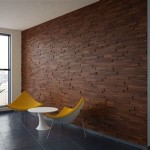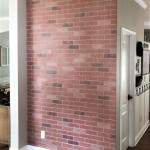How Much Should Interior House Painting Cost?
Determining the cost of interior house painting can be a complex process, influenced by a variety of factors. A clear understanding of these factors is crucial for homeowners to budget effectively and ensure they receive fair pricing from painting contractors. Several elements contribute to the final expense, including the size of the area to be painted, the type of paint used, the condition of the walls, and the labor costs associated with the project.
Accurately estimating the cost before embarking on an interior painting project allows for informed decision-making. It enables homeowners to compare quotes from different contractors, assess the value offered for the price, and avoid potential overspending. This article aims to provide a comprehensive overview of the factors affecting interior house painting costs, offering a framework for homeowners to navigate the process effectively.
Size and Scope of the Project
The square footage of the area to be painted is a primary determinant of the overall cost. Larger rooms and homes naturally require more paint and labor, leading to higher expenses. Contractors typically provide estimates based on the square footage of the walls and ceilings, taking into account the paint's coverage rate per gallon. The complexity of the space also plays a role. Rooms with high ceilings, intricate trim work, or numerous windows and doors require more time and precision, increasing the labor component of the cost.
The number of rooms being painted significantly impacts the total price. Painting a single room will invariably be less expensive than painting an entire house. Contractors often offer volume discounts for larger projects, so painting multiple rooms simultaneously can be more cost-effective than tackling them individually over time. Careful consideration of the scope of the project is therefore essential for accurate budgeting.
The scope also includes the preparation work needed. This can involve tasks such as patching holes, repairing cracks, removing wallpaper, or sanding uneven surfaces. If significant preparation is required, this will add to the overall labor costs. Understanding the full extent of the work required is necessary for obtaining a realistic estimate.
Calculating the square footage of the walls is a straightforward process. Measure the length and height of each wall in the room, then multiply these figures to determine the area of each wall. Add the areas of all the walls together to obtain the total square footage. This measurement is crucial for estimating the amount of paint required and comparing contractor quotes. Remember also the square footage of the ceiling if that will be painted.
Additionally, consider the number of coats of paint required. Most interior painting projects involve at least two coats for optimal coverage and durability. However, if the existing wall color is significantly different from the new color being applied, or if a lower-quality paint is used, additional coats may be necessary, increasing both the material and labor costs. Always clarify with the contractor how many coats are included in the estimate.
Type and Quality of Paint
The type and quality of paint significantly influence the overall project cost. Paints are available in a wide range of qualities, from budget-friendly options to premium, high-performance products. Higher-quality paints generally offer better coverage, durability, and color retention, requiring fewer coats and lasting longer. While they may be more expensive upfront, they can be a more cost-effective choice in the long run by reducing the need for frequent repainting.
Paint finishes also affect the cost. Different finishes, such as matte, eggshell, satin, semi-gloss, and gloss, have varying levels of sheen and durability. Matte finishes are often used in bedrooms and living rooms because they provide a low-reflective surface that hides imperfections. Eggshell and satin finishes are more durable and easier to clean, making them suitable for hallways and bathrooms. Semi-gloss and gloss finishes are typically used for trim and doors because they are highly durable and resistant to moisture.
The choice of paint finish depends on the specific room and its intended use. More durable finishes, like semi-gloss and gloss, are generally more expensive than matte finishes. Consider the long-term maintenance requirements and the desired aesthetic when selecting a paint finish. A durable, easy-to-clean finish can save time and effort in the long run.
Specialty paints, such as mildew-resistant paint for bathrooms or low-VOC (volatile organic compound) paint for allergy sufferers, can also impact the cost. These paints offer specific benefits but typically come at a premium price. Evaluate the needs of the space and whether the added benefits of specialty paints justify the extra expense.
The brand of paint can also play a role in the cost. Established and reputable brands often command higher prices due to their consistent quality and performance. While less expensive, off-brand paints may not offer the same level of coverage, durability, or color consistency. Research different paint brands and read reviews to make an informed decision based on your budget and desired outcome.
Labor Costs and Preparation Work
Labor costs constitute a significant portion of the overall interior painting expense. The hourly rate or per-room charge of painting contractors varies based on their experience, location, and the complexity of the project. Experienced and reputable contractors typically charge higher rates but offer greater expertise and reliability. It is important to obtain multiple quotes from different contractors to compare pricing and services.
The amount of preparation work required directly impacts the labor costs. If the walls are in poor condition, requiring extensive patching, sanding, or wallpaper removal, the labor time will increase, resulting in a higher overall cost. Thoroughly assess the condition of the walls and discuss the necessary preparation steps with the contractor before receiving an estimate.
Some painting contractors charge by the hour, while others charge a flat rate per room or per square foot. Understanding the contractor's pricing structure is essential for accurately comparing quotes. Hourly rates can be advantageous if the project is straightforward and requires minimal preparation. Flat rates offer more predictability but may be higher if the project is complex or requires significant preparation.
In addition to the actual painting, labor costs may also include tasks such as moving furniture, covering floors and fixtures, and cleaning up after the job is completed. Clarify with the contractor exactly what services are included in the estimate to avoid any unexpected charges. A reputable contractor will provide a detailed breakdown of the costs, including labor, materials, and preparation work.
The complexity of the trim work and detailing can also influence labor costs. Painting intricate trim, moldings, and baseboards requires more time and skill than painting flat walls. Contractors may charge extra for these specialized tasks. Obtain a clear understanding of how the contractor charges for trim work to accurately estimate the overall cost.
Finally, the location of the property can affect labor costs. Contractors in urban areas or regions with a higher cost of living typically charge more than those in rural areas. This is due to factors such as higher overhead expenses, transportation costs, and competition for skilled labor. Consider the location of your property when budgeting for interior painting.
By carefully considering these factors, homeowners can gain a better understanding of the costs involved in interior house painting and make informed decisions when hiring a painting contractor. Obtaining multiple quotes, assessing the contractor's experience and reputation, and clarifying the scope of the project are all crucial steps in ensuring a satisfactory and cost-effective outcome.

How Much Does It Cost To Paint The Interior Of A House In Paintrite Pros

Interior House Painting Costs In Roseville Trico

How Much Does It Cost To Paint The Interior Of A House In Paintrite Pros

How Much Does Interior House Painting Cost A New Leaf

Cost To Paint Home Interior House Painting For

Cost Of Painting A House Interior Comprehensive Guide

The Cost Of Painting A House In 2025

What Do Painters Charge Per Day

Interior Painting Cost Per Square Foot Home Painters Toronto

Eric Welch Painting Painter S Blog How Much Does It Cost To Paint Your House
Related Posts








